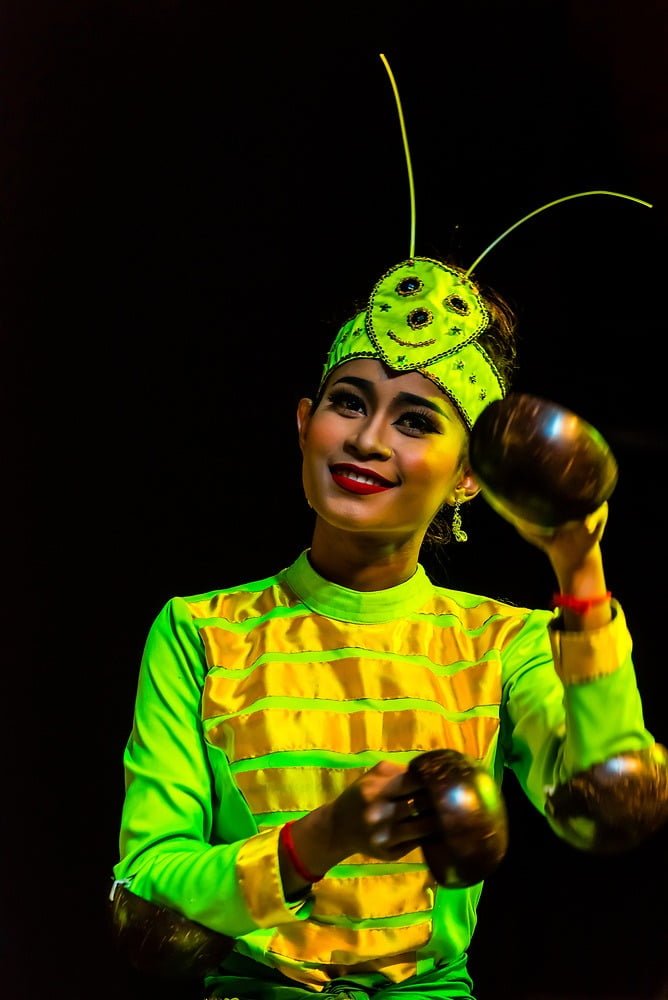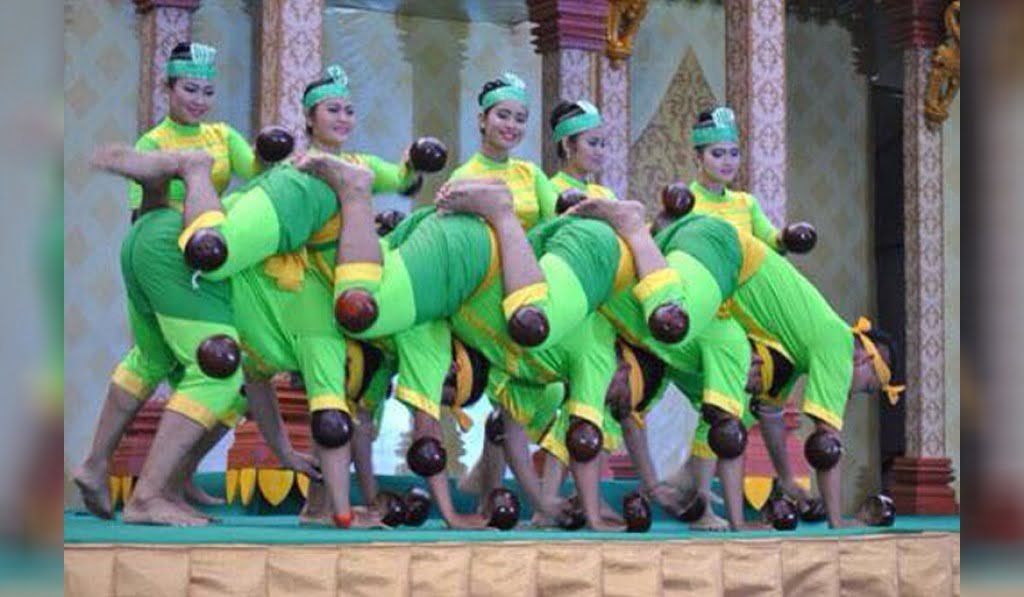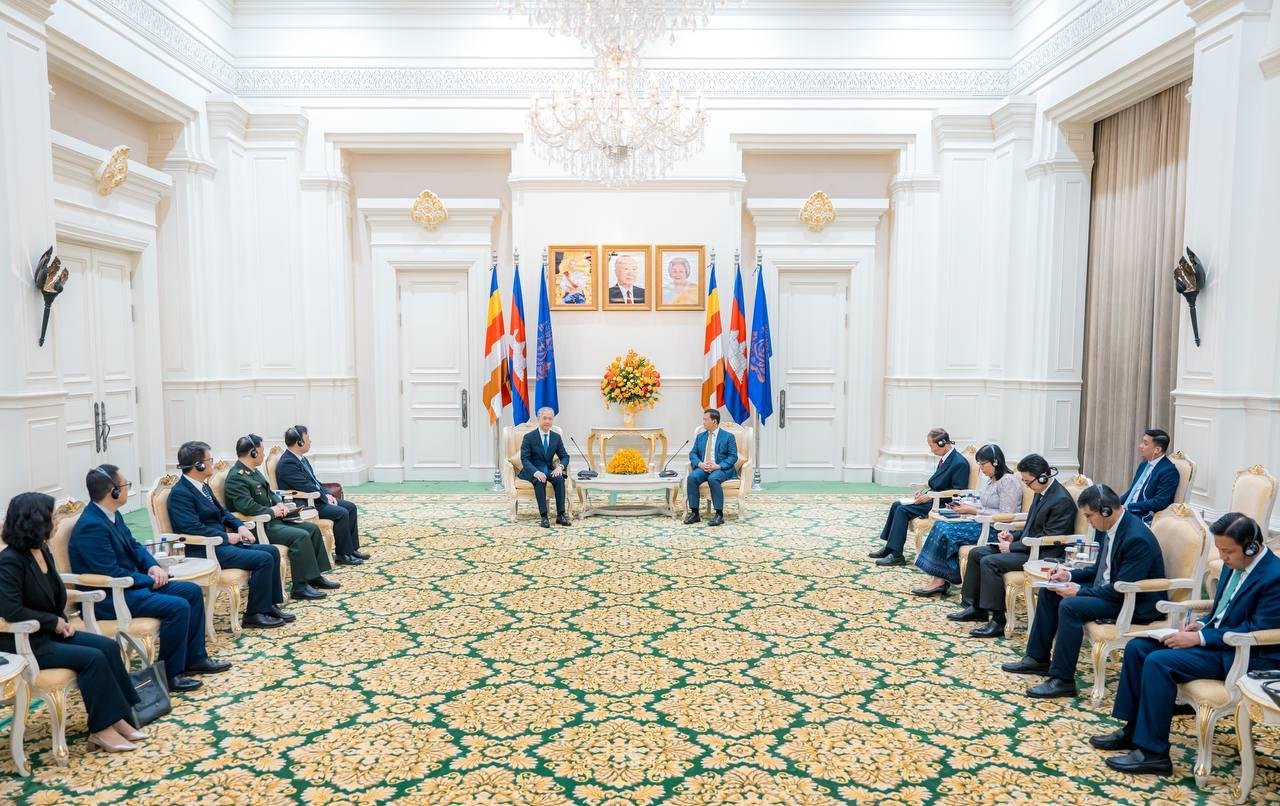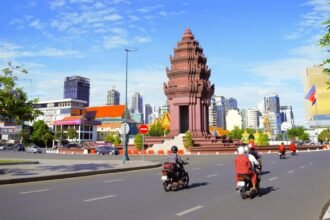This is a typical Svay Rieng province folk dance. This dance typically imitates the praying mantis through gestures, and its outfits are coloured like the insect. Pairs of empty coconut shells are tied to the dancers’ hands and elbows during the performance.
Traditional dances in Cambodia typically reflect animism and supernatural beliefs. People perform vibrant dances to spirits or the supernatural to appease them when they are believed to be the cause of difficulties.
Khmer folk dances are highly energetic dances that include vivid gestures and movements while mimicking popular themes. Dance themes commonly draw inspiration from culture and daily life in the area. Dancers perform their dance to cheerful music and rhythm with simple, improvised yet precise gestures that are intended to evoke humour and enthusiasm.

The Robam Kandob Ses is a traditional dance that originates from Chup Village in the Svay Teap district of the Svay Rieng Province. This dance’s gestures mostly mimic praying mantis motions. The number of dancers depends on their availability, and the outfits are coloured like praying mantis.
This vibrant dance is accompanied by the beat of drums, a singer, and the singing melody of the kse diev, a traditional stringed instrument. Coconut shells are used during the performance as pairs of empty coconut shells are tied on the dancers’ hands and elbows.
More instruments, including the tro (string fiddle) and roneat (xylophone) have been added in later generations
The Cambodian community of the Svay Rieng province has adopted this dance to take part in wedding ceremonies, particularly for the groom procession, in an effort to create a nice environment and give the occasion more splendor.
Furthermore, both male and female dancers, hold a pair of exquisitely polished coconut shells. Then, with fun and mischievous performance, they start dancing to traditional rhythms (Phleng Kar), moving quickly and crossing their bodies like a grasshopper.
According to Khmer preferences, when it is performed at weddings, it brings happiness and glory to the couple.
Source: In to Cambodia








